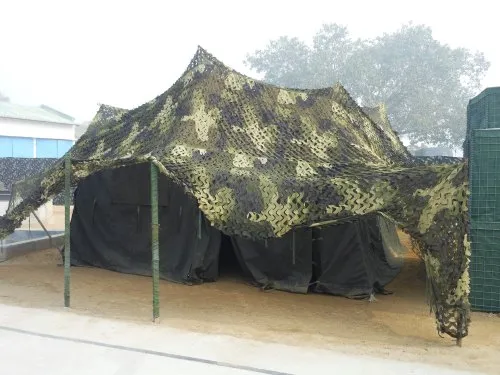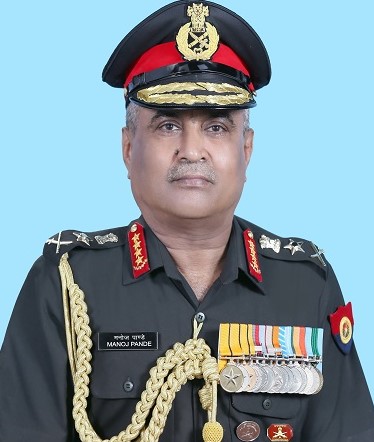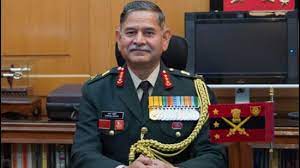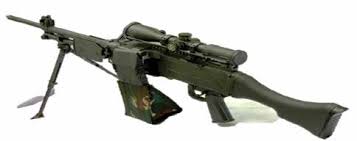The Ministry of Defence, Government of India, intends to procure 6,175 Numbers of Multi Spectral Camouflage Net (MSCN) for High Altitude including Barren Mountain/Snow Bound Area and have issued a Request for Proposal (RFP) for the same.
The end users of the equipment will be the Indian Armed Forces.
The equipment i.e., MSCN for High Altitude Area (HAA) Barren Mountains and Snow Bound Area should be made of specially developed polymer coated fabric(s) of disruptive pattern that blends with the environment in different types of terrain while suppressing signatures in the Visual, IR, TIR and radar ranges of the EM spectrum that can be picked up by the enemy surveillance device.
Further, MSCN for High Altitude Area (HAA) Barren Mountains and Snow Bounded Area will provide camouflage to the designated critical equipment such as tanks, radars etc in the various ranges of the EM spectrum when located within the range of the enemy surveillance devices.
As per the RFP, the entire quantity is required to be supplied by L1 and L2 vendors in the ratio of 60:40 respectively (L1- 3705, L2 -2470). In case, L2 is unwilling to supply at price and terms and conditions negotiated with the L1 vendor, then the entire quantity of 6175 numbers will be supplied by the L1 vendor.
The RFP mentions that the delivery of equipment is to be completed in 24 months.
Operational Parameters of Multi Spectral Camouflage Net (MSCN)
Following are the required operational parameters of Multi Spectral Camouflage Net mentioned in the RFP: –
Ranges of Spectrum and Distances. MSCN, when used to camouflage equipment, will reduce the chance of recognition of the object (s) covered by it, when viewed using sensors in the following defined regions of the EM spectrum: –
(a) Visual Range. The wavelength range covered is 380 to 780 nm.
(i) The chance of recognition of object(s) when covered with MSC N will reduce by 70 % at the following distances: –
(aa) 750 m during day time (ambient light condition is that of a clear day with a bright sun).
(ab) 100 m during night (ambient light condition is that of a full moon night).
(b) UV Range. The wavelength range covered is 300 to 380 nm. The minimum reflectivity index of the MSCN when tested under laboratory conditions (with the same test set as that for NIR reflectance) will be 60%.
(c) NIR Range. The wavelength range covered is 800 to 1200 nm and the ambient light condition is that of a full moon night.
(i) The chance of recognition by observer(s) using an in-service Passive
Night Vision (PNV) Goggles or a PNV Device of object(s) when covered with MSC N will reduce by 70% at a distance of 300m.
(ii) NIR Reflectance. The NIR reflectance of the material in the range 800 to 1200 nm used for the MSCN when subjected to laboratory tests against ISO 7724 for the under mentioned colours will be as given below:-
- 800 nm to 1200 nm.
(aa) Olive green (ISC 220): (45 + 10) %.
(ab) Light green (ISC 278): (55 + 10) %.
(ac) Un-dyed Hemp (Sand) (ISC 386): (40 + 10) %.
(ad) Dark brown (ISC 412): < 25 %.
(ae) Slate Grey (ISC 634): < 25 %.
(af) White: > 60%.
(ag) Light Brown (ISC 410/ISC 411): < 35%.
(d) TIR Range. The wavelength ranges covered are 3µ to 5µ and 8µ to 12µ bands.
(i) Thermal Transmission Test. The maximum thermal transmission of MSC N when tested under laboratory conditions against MIL PR F 53134 (4.4 .2.3.1) specifications and measured in th e 3µ to 5µ ban d and 8µ to 12 µ band will be 20%.
(ii) Screen Thermal Test or Thermal Loading Test. The maximum temperature difference of the MSCN with the environment due to solar loading / ambient cooling when evaluated against MIL PRF 53134 (4.4.2.3.2) will be less than 100C.
(e) The MSCN, when evaluated under laboratory conditions, will be capable of attenuating the average radar transmission in the centimetre and millimetre wavelength bands wherein the minimum transmission loss of the s ample material should be 6 dB (3 dB one way). The MSCN will be evaluated under lab conditions against MIL- PRF-53134 (4.4.2.4) for the range of 2-18 GHz; in addition, the vendor will certify that the MSCN will provide a 6 d B (3 dB one way) minimum transmission loss for the entire gamut of centimetre and millimetre radar wavelength band.
- Reversibility. The MSCN will be reversible and lend itself for usage in two different contiguous terrains with one side for High Altitude Area Barren Mountain Terrain and the reverse side for Snow Bounded Area Terrain.
- Colours. The MSCN will have a colour pattern that is made up of colours conforming to Indian Standard Colour (ISC) code as given below such that it blends with the terrain that is akin to the areas in Ladakh, Karakoram ranges and glacial regions. For the ease of comprehension, as a generic reference, the constituent colours of the specified terrain are given below. These are only guidelines and consequently vendors may suitably change / moderate the colours and their percentages in order to ensure the paramount mandate that the MSCN blends with the surrounding terrain. The vendor(s) finally s elected for supplying MSCN will indicate the various IS colour codes and exact percentages used along with methodology.
(a) Olive Green (ISC -220).
(b) Mid Bronze Green (ISC-223).
(c) Light Green (ISC -278).
(d) Light Stone (ISC-361).
(e) Mid Stone (ISC-362).
(f) Un-dyed Hemp (Sand) (ISC-386).
(g) Beige (Buff) ISC-388).
(h) Dark Brown (ISC -412).
(j) Orange Brown (ISC-439).
(k) Slate Grey (ISC-634).
(l) White.
- Temperature Range.
(a) Operating Temperature Range. The MSCN will be operable at the ambient temperatures given below:-
(i) Minimum temperature of minus 300 C to minus 200 C.
(ii) Maximum temperature of 250 C to 350 C.
(b) Storage Temperature. There should be no requirement of any special arrangement for storage and it should be safe for storage from temperature range of minus 300 C to 500 C.
(c) The MSCN will be tested under laboratory conditions against IS 7016 (Part 10): 1997.
Technical Parameters
- Material.
(a) The equipment will have a matt finish with maximum gloss value of 6 when evaluated under laboratory conditions against IS: 1 01 (Part 4 / Section 4) -1988.
(b) The material will be safe for human usage (to be vendor certified).
(c) The material will be washable using off the shelf commercially available detergents and the colour fastness of the net fabric will be tested for a minimum rating of four under laboratory conditions against IS / ISO 105-C10:2006 and IS: 1259-1984 (4.6.4).
- Weight. The dry weight of the MSCN (excluding the mounting and support systems) will not exceed 300 gm/m2.
- Water Absorption. The maximum weight increases of the MSCN (without accessories) when tested against ASTM D 570 will be 30% of the dry w eight of the same specimen.
- Resistance to Fire. The MSCN will be fire retardant and should meet the standards of MIL PRF 53134 (4.4.2.5.1) when tested under laboratory conditions.
- Sizes. The MSCN will be made available in six sizes as given below (with tolerance of minus 1%). Eight extension cords, each of 10 m length, shall be provided with each net.
(a) 25 m x 20 m.
(b) 16 m x 11 m.
(c) 11 m x 11m.
(d) 11 m x 8 m.
(e) 8 m x 5.5 m.
(f) 5.5 m x 4 m.
- Mounting Equipment / Support Systems. Details of the support system for the various sizes of MSCN are given as Annexure. The support system will be made of metallic or composite materials. Their compliance to the under mentioned parameters will be verified under laboratory conditions: –
(a) The material will be able to withstand an impact of minimum 20 kg; vendor will provide a certificate for the same from an accredited laboratory.
(b) The material will be rust resistant; vendor will provide a certificate for the same from an accredited laboratory.
(c) The material, when subjected to ultimate load test, will, upon failure, not shatter or burst; vendor will provide a certificate for the same from an accredited laboratory.
(d) The material will have a maximum gloss value of 6 when evaluated under laboratory conditions against IS: 101 (Part 4 / Section 4) -198 8. A flat sample of mounting equipment material of size 5cm x 5cm will be produced for the lab trials.
- Strength of the MSCN.
(a) The minimum tensile / breaking strength of the MSC N material will be 30 kg and the same will be verified against IS 7016 (Part II)-1981 / IS 1969-1985 / IS 5815 (Part 4) 1993 as applicable under laboratory conditions.
(b) The minimum tensile strength of tie, loop and edge cord (each as finished product) will be 200 kg and the same will be verified against IS 7071 (Part 4): 1986 under laboratory conditions.
(c) Joints. The MSCN will have the provision for joining two or more nets from all sides. The joint will have an overlap and a minimum tensile strength of 25 kg and the same will be verified against IS: 7016 (Part II)-1981 under laboratory conditions; vendor will provide a certificate for the same from an accredited laboratory.
(d) Flexing. The MSCN will be tested against IS: 7016 (Part 4) 2003 under laboratory conditions for resistance to damage by flexing.
(e) Tear Strength. The MSCN will be tested under laboratory conditions against BS 3424: Part 5: 1982.
(f) Shrinkage. The shrinkage of the MSCN when tested under the laboratory conditions as per IS: 1259-1984 (4.7) will not exceed 5% in warp and w eft directions each.
Maintainability & Ergonomic Parameters
- Life of the Equipment.
(a) The MSCN and the support system will have a life of ten years in a sealed condition when stored in a closed storage area without environmental control (to be vendor certified).
(b) Upon breaking open the original sealed packing, the MSC N and the support system will sustain 150 handlings (to be vendor certified) with each handling comprising of taking the MSCN and the support system out of the packing, erecting the MSCN on its support system and repacking it or seven years (to be vendor certified) whichever is earlier.
- Repair. The net will be repairable by troops in field conditions. Each MSCN will be accompanied by a repair kit.
For more details https://indianarmy.nic.in/writereaddata/rfi/1987/134f8580-4d5f-4608-8f8e-2e9c0a683f8b.pdf
Image Source: https://m.indiamart.com/proddetail/army-camouflage-net-ttnc160-23750769273.html





